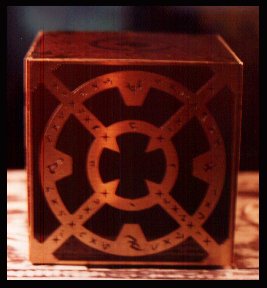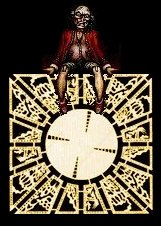THE ELEGY CONFIGURATION
"The Chains Of Verekna"
"The
Elegy
Yantra"
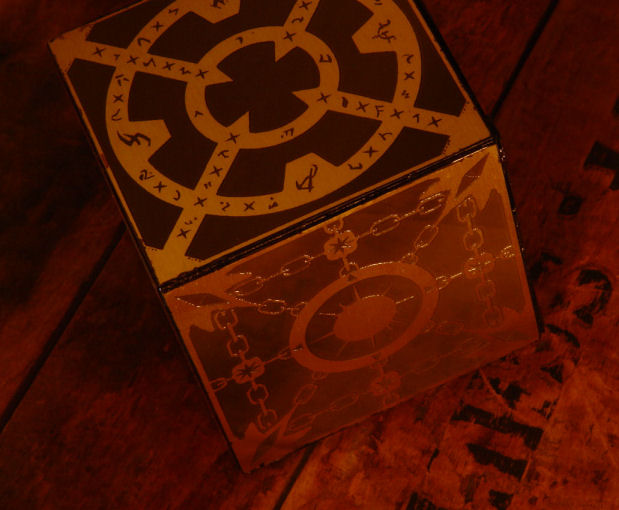
|
The Elegy
Configuration
is LeMarchand's reproduction of a Indonesian Yantra
(of the same name)
created by unknown
craftsmen
in the late bronze age ( 2500 BC ). LeMarchand had a
fascination with artifacts of antiquity and it is no secret
that he "borrowed" many
of his designs from already infamous sources. |
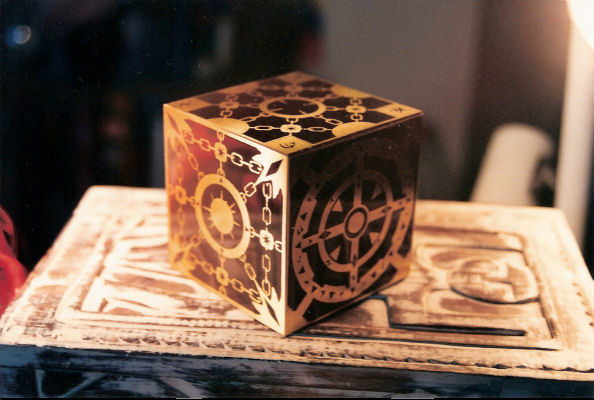
|
A Yantra is a
hinduistic
religious instrument said to have a life of its own. They are said to be Deva/Devi
( Gods/Goddesses ) in geometrical or patterned form. LeMarchand had studied
these devices during the time of his first puzzle box creation, "The
Lament Configuration".
The influence of the yantra can be seen in nearly all of his
puzzle box creations. |
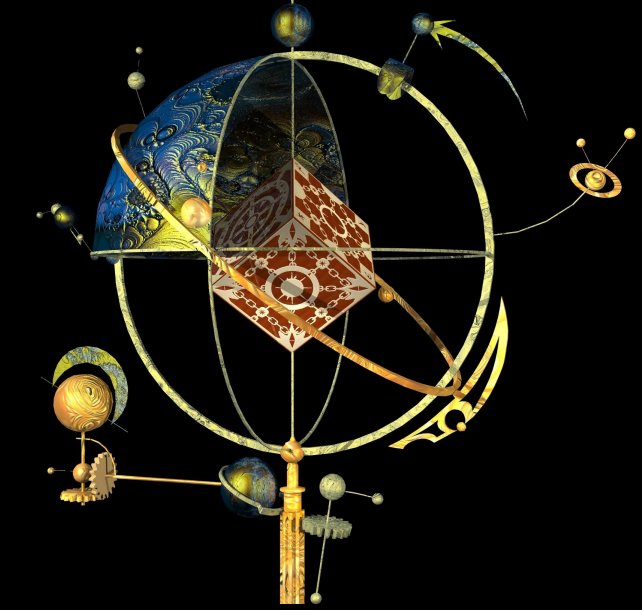
|
LeMarchand's earliest entries in his journal mention a artifact simply known as the "Sri Yantra" ("beautiful instrument"). It is believed that he had this yantra shipped from India to Paris sometime previous to his work on intricate "singing bird" music boxes (1747). It was the study of the patterns found inscribed upon this yantra that prompted his search for other geometrical art, including the long lost yantra of antiquity - Elegy. |
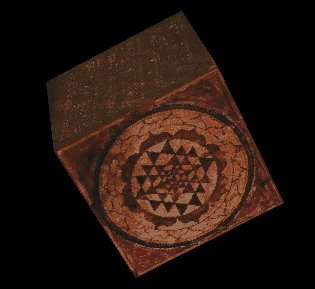
|
He wrote the following entries in his personal journal concerning the birch wood cube - Sri Yantra: |
|
"...Yantras are the geometrical form of a divinity in the tantrik tradition. The point or bindu at the center, generally represents the deity. The triangles represent the active and passive aspects of the deity. Triangles are often surrounded by enclosing circles and a group of petals, in which are the attendants of the Devis or Devas. Finally, the whole is often enclosed in a bhupura a word which means earth-city. These are the enclosing walls, fenced by the guardians of the directions and the intermediate directions (dikpalas)" "...A Yantra is only truly vitalized when it is engraved with the bija and other mantras and surrounded with the matrikas, or letters of the Sanskrit alphabet. Before use, it must be instilled with life." "...the Yantra should be placed on a pedestal (pitha), and bathed with the substances previously described, whilst the appropriate root mantra is recited. One should then offer scent and flowers, and should worship the appropriate Devi in the usual form within the yantra. This all should be done at night." - The Journal of Philip LeMarchand |
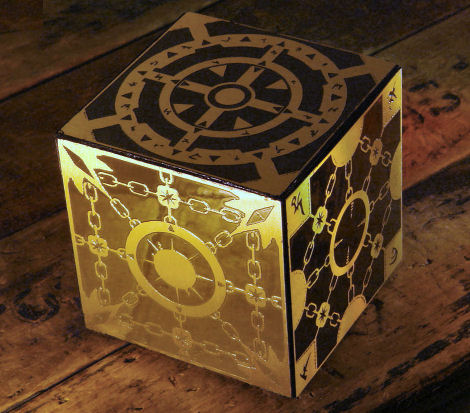
| In 1748, after completing his study of the Sri Yantra, LeMarchand began research on "The Elegy Yantra" who's origins dated back some four thousand years. |
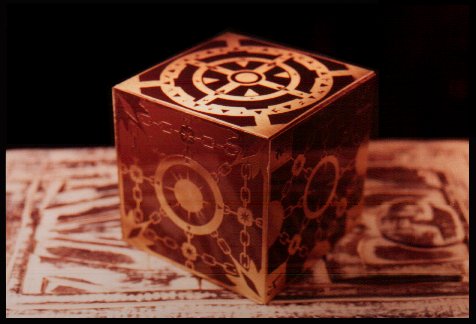
| This yantra was
designed
to hold the essence of Verekna
- "Prince of the mind"
a powerful
Deva of
Indonesian origin who held the principle power of deception. |
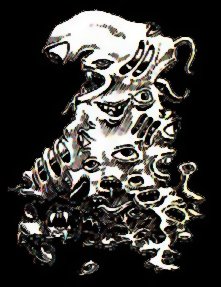
|
"...Verekna's
ninety-nine gibbering mouths
yammer
lies incessantly." - A
Guide to
Ancient
Mythology - Dr.
J.
Julian, 1943
|
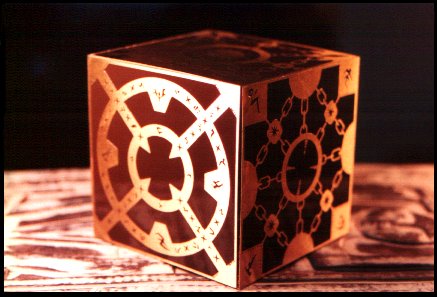
| The Elegy Yantra had been aquired by Arab merchants who had landed in North Sumatra in 846 AD to spread Islam. |
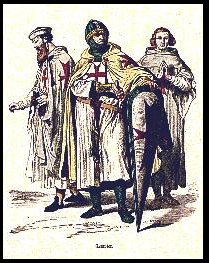
|
Transferring ownership to the Knights Templar (via the Crusades) in the thirteenth century, "The Chains of Verekna" (its name given by a Muslim sect) was passed around from aristocracy to aristocracy until it came to rest in the secretive clutches of the Masonic Lodge. It is believed that Philip LeMarchand had access to a Masonic library located in Paris in 1748. There he completed his research into the mysteries of the Elegy Yantra. It is not known whether he was privy to the yantra itself, or just to documents detailing its origins, uses, and most importantly its geometric surface designs. There are indeed rumors to this day of charcoal etchings of LeMarchand's manufacture that detail the Elegy Yantra's designs, circulating as art in northern Europe. |
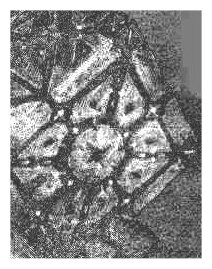
| In 1749, LeMarchand re-produced the Elegy Yantra as his third box construct. |
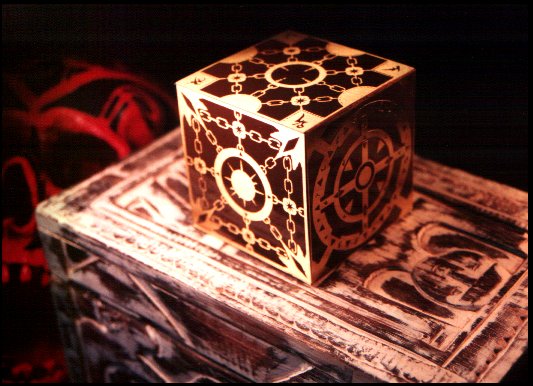
| At this point, LeMarchand had murdered twenty-nine people. |
